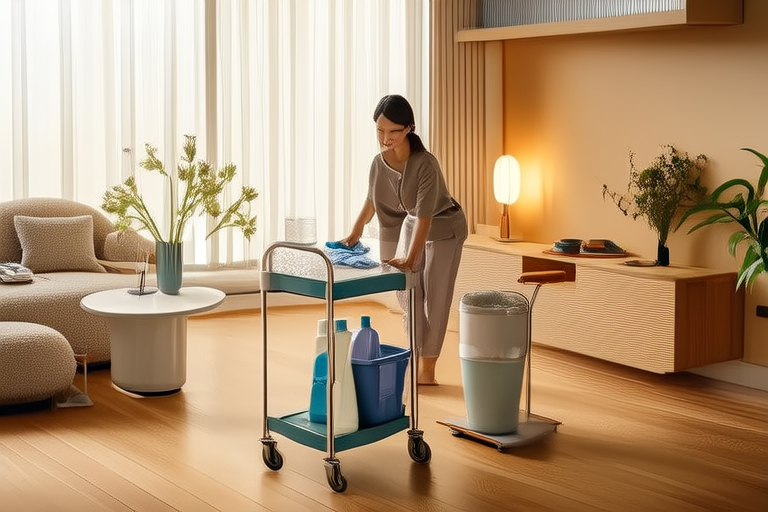Introduction
Maintaining the appearance of your home surfaces is not only about aesthetics but also about preserving the value and functionality of your living space. Whether you’re dealing with hardwood floors, kitchen countertops, or bathroom tiles, keeping these surfaces looking new can be both challenging and costly. However, with some budget-friendly tips and tricks, you can extend the life of your home surfaces without breaking the bank. In this article, we’ll explore various cost-effective methods to keep your home surfaces in top condition, from cleaning to maintenance.
Cleaning Basics: The Foundation of Longevity
The first step in maintaining any surface is regular cleaning. Proper cleaning removes dirt, grime, and potential damage-causing substances before they have a chance to settle in. Here’s how you can clean different surfaces effectively:
Hardwood Floors
Hardwood floors add elegance to any room, but they require careful handling. Use a microfiber mop or vacuum cleaner with a soft brush attachment to remove dust and debris. For deeper cleaning, mix water with a mild dish soap and a few drops of white vinegar. Avoid using harsh chemicals like ammonia or bleach, as they can strip the finish and cause damage.
- Vacuum or sweep the floor to remove loose particles.
- Mix a solution of warm water, mild dish soap, and white vinegar.
- Mop the floor gently, ensuring not to soak the wood.
- Dry the floor immediately with a soft cloth to prevent water spots.
Kitchen Countertops
Kitchen countertops, especially granite and quartz, can withstand daily wear and tear if properly cared for. Regular cleaning prevents scratches and stains. For granite, use a pH-neutral cleaner designed specifically for stone surfaces. For laminate countertops, a mixture of baking soda and water works wonders.
- Sprinkle baking soda on the countertop.
- Dampen a cloth with water and scrub the surface.
- Rinse with a damp cloth and dry thoroughly.
Preventative Maintenance: Keeping Ahead of Damage
Preventative maintenance is key to extending the lifespan of your home surfaces. By addressing small issues early, you can avoid more significant problems down the line.
Protecting Wood Surfaces
Wood surfaces, whether floors or furniture, benefit greatly from protective treatments. Apply a high-quality sealant or wax every six months to protect against moisture and wear. For outdoor wooden decks, consider using a weather-resistant sealant to shield them from harsh elements.
- Choose the right product: Ensure the sealant is compatible with the type of wood.
- Apply evenly: Use a brush or roller for even coverage.
- Allow time to dry: Follow the manufacturer’s instructions for drying time.
Maintaining Tiles and Grout
Tiles and grout are susceptible to mold and mildew, especially in humid environments. Regularly clean grout lines with a mixture of hydrogen peroxide and water. This not only keeps the area hygienic but also helps prevent discoloration.
- Mix hydrogen peroxide with water in a 1:1 ratio.
- Apply the solution to grout lines using a sponge.
- Let it sit for 10 minutes.
- Scrub gently and rinse with clean water.
DIY Solutions for Common Issues
Sometimes, despite your best efforts, surfaces may develop minor issues. Here are some DIY solutions for common problems:
Removing Stains from Stone Countertops
Stains on stone countertops can be frustrating, but they’re often removable with a bit of elbow grease. For oil-based stains, apply a paste of baking soda and water. Let it sit for an hour, then scrub and rinse.
- Create a paste of baking soda and water.
- Apply the paste to the stain.
- Let it sit for at least one hour.
- Scrub gently and rinse with water.
Reviving Scratched Wooden Floors
Scratches on wooden floors can detract from their appearance. To minimize the visibility of scratches, use a wood filler that matches the color of your floor. Sand the area lightly, apply the filler, and sand again once dry.
- Sand the scratched area lightly.
- Apply wood filler matching the floor color.
- Allow it to dry completely.
- Sand and polish the area to blend it in.
Practical Advice and Actionable Tips
To ensure your surfaces remain in top condition, follow these practical tips:
- Create a Cleaning Schedule: Regular cleaning is crucial. Establish a routine that includes weekly sweeping, monthly deep cleaning, and quarterly inspections for any signs of wear or damage.
- Use Soft Cleaning Tools: Avoid using abrasive tools that can scratch or damage surfaces. Opt for soft cloths, sponges, and brushes designed for gentle cleaning.
- Monitor Humidity Levels: High humidity can lead to mold and mildew growth, especially in bathrooms and kitchens. Use dehumidifiers or exhaust fans to maintain optimal humidity levels.
Conclusion
Keeping your home surfaces looking new doesn’t have to break the bank. With regular cleaning, preventative maintenance, and occasional DIY fixes, you can preserve the beauty and functionality of your floors, countertops, and tiles. Remember, the key is consistency—establishing a routine and sticking to it will yield the best results. Take action today by implementing these budget-friendly tips and enjoy a refreshed, beautiful home for years to come.
